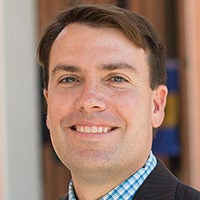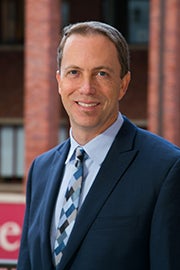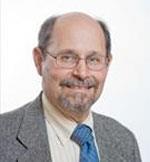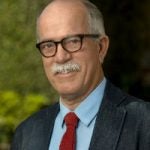More than just numbers: USC experts on what the L.A. homeless count means
 Results from the 2018 Homeless Count showed improvements in Los Angeles’ mighty struggle against homelessness. Countywide, homelessness fell by three percent to 53,195 — the first drop in four years. Chronic homelessness is down, and housing placements for veterans and youth have increased.
Results from the 2018 Homeless Count showed improvements in Los Angeles’ mighty struggle against homelessness. Countywide, homelessness fell by three percent to 53,195 — the first drop in four years. Chronic homelessness is down, and housing placements for veterans and youth have increased.
While those numbers are encouraging, Los Angeles remains one of the least affordable housing markets in the nation. It’s estimated that more than half a million affordable housing units are needed.
For the second year, USC experts from several disciplines analyzed data from the count, in partnership with the Los Angeles Homeless Services Authority. The data analysis ultimately helps determine how resources are allocated.
Contact: Ron Mackovich, (213) 810-8583 or rmackovi@usc.edu
Data debunks myths about homelessness
 “Our goal is to provide the best estimates of our homeless population for the purpose of policy and planning. This involves conducting surveys with over 5,000 people experiencing homelessness in Los Angeles County. The results also show that common assumptions – that the majority of the people want or choose to be homelessness, that they are homeless mostly because of drugs, or that they move to Los Angeles to be homeless — are not supported by data.”
“Our goal is to provide the best estimates of our homeless population for the purpose of policy and planning. This involves conducting surveys with over 5,000 people experiencing homelessness in Los Angeles County. The results also show that common assumptions – that the majority of the people want or choose to be homelessness, that they are homeless mostly because of drugs, or that they move to Los Angeles to be homeless — are not supported by data.”
Benjamin Henwood is an assistant professor at the USC Suzanne Dworak-Peck School of Social Work. He is an expert in mental health and housing service and co-author of the book, “Housing First,” which examines a paradigm-shifting approach that does not demand sobriety or treatment for permanent housing.
Moving in the right direction
 “While it is important to interpret any singular year of data with caution, the results of the count indicate that the region’s interventions are moving us in the right direction. There is still of course considerable work to do, but the current portfolio of interventions provides the right strategy to further reduce homelessness in the region.”
“While it is important to interpret any singular year of data with caution, the results of the count indicate that the region’s interventions are moving us in the right direction. There is still of course considerable work to do, but the current portfolio of interventions provides the right strategy to further reduce homelessness in the region.”
Gary Painter is director of social policy at the USC Sol Price Center for Social Innovation, and serves as director of the newly created Homelessness Policy Research Institute. Professor Painter’s research interests focus on social innovation, housing, urban economics, and education policy.
Contact: gpainter@usc.edu or (213) 740‑8754
Causes of homelessness persist
 “The most recent census of homeless people in Los Angeles shows the problem remains frustratingly high. We shouldn’t get distracted by what seem to be small changes year to year. A complex array of social policies must be enacted and implemented, encompassing housing, health, job creation, addiction treatment and mental health care, along with a system to connect people to what they need to rebuild their lives.”
“The most recent census of homeless people in Los Angeles shows the problem remains frustratingly high. We shouldn’t get distracted by what seem to be small changes year to year. A complex array of social policies must be enacted and implemented, encompassing housing, health, job creation, addiction treatment and mental health care, along with a system to connect people to what they need to rebuild their lives.”
Michael Cousineau is a professor of clinical preventative medicine at Keck School of Medicine of USC, and a leading expert in the health needs of homeless populations.
Contact: cousinea@usc.edu or (323) 442-8249
Driving policy solutions statewide
 “USC is well-positioned to address homelessness at a high level of public policy. California needs half a million new units of housing today in order to meet demand. This severe shortfall is one of the primary upstream causes of growing homelessness in L.A. and the rest of our state. We have the moral and academic authority to convene politicians with statewide leaders in the realms of housing development and finance, the environment, and social services, and craft legislative proposals to streamline housing construction.”
“USC is well-positioned to address homelessness at a high level of public policy. California needs half a million new units of housing today in order to meet demand. This severe shortfall is one of the primary upstream causes of growing homelessness in L.A. and the rest of our state. We have the moral and academic authority to convene politicians with statewide leaders in the realms of housing development and finance, the environment, and social services, and craft legislative proposals to streamline housing construction.”
Rev. Jim Burklo is USC’s senior associate dean of religious life and adjunct lecturer in public policy at the USC Suzanne Dworak-Peck School of Social Work.
Contact: burklo@usc.edu or (213) 740‑6110
